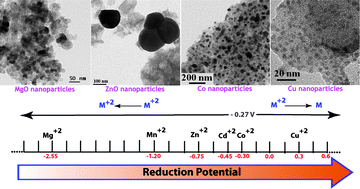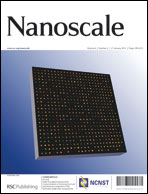Herein, for the first time, we report a generalized strategy for the successful synthesis of highly crystalline metal and metal oxide nanoparticles embedded in a carbon matrix by the controlled thermolysis of metal organic frameworks (MOFs). The rationalized synthesis strategy of a broad range of metal and metal oxides nanoparticles, such as Cu/CuO, Co/Co3O4, ZnO, Mn2O3, MgO and CdS/CdO, by thermolysis of MOFs demonstrates for the first time that metal ions with a reduction potential of −0.27 volts or higher present in MOFs always form pure metal nanoparticles during thermolysis in N2, whereas metal ions with a reduction potential lower than −0.27 volts form metal oxide nanoparticles during thermolysis in N2. Another point of interest is the fact that we have found a unique relationship between the nanoparticle size and the distance between the secondary building units inside the MOF precursors. Interestingly, the crystallinity of the carbon matrix was also found to be greatly influenced by the environment (N2 and air) during thermolysis. Moreover, these nanoparticles dispersed in a carbon matrix showed promising H2 and CO2 adsorption properties depending on the environment used for the thermolysis of MOFs.

You have access to this article
 Please wait while we load your content...
Something went wrong. Try again?
Please wait while we load your content...
Something went wrong. Try again?


 Please wait while we load your content...
Please wait while we load your content...